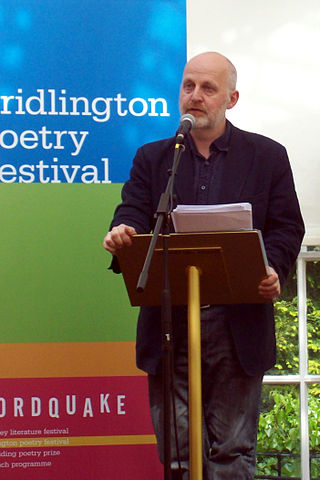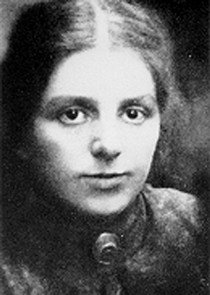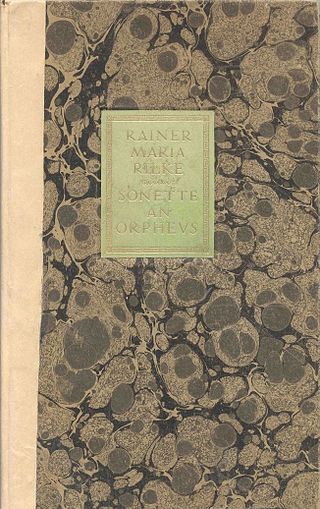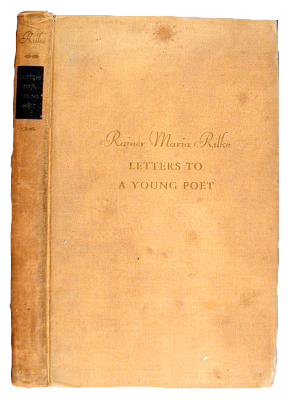Related Research Articles

René Karl Wilhelm Johann Josef Maria Rilke, known as Rainer Maria Rilke, was an Austrian poet and novelist. Acclaimed as an idiosyncratic and expressive poet, he is widely recognized as a significant writer in the German language. His work is viewed by critics and scholars as possessing undertones of mysticism, exploring themes of subjective experience and disbelief. His writings include one novel, several collections of poetry and several volumes of correspondence.
The term sonnet refers to a fixed verse poetic form, traditionally consisting of fourteen lines adhering to a set rhyming scheme. It derives from the Italian word sonetto. Originating in 13th-century Sicily, the sonnet was in time taken up in many European-language areas, mainly to express romantic love at first, although eventually any subject was considered acceptable. Many formal variations were also introduced, including abandonment of the quatorzain limit – and even of rhyme altogether in modern times.
A song cycle is a group, or cycle, of individually complete songs designed to be performed in sequence, as a unit.

Adalbert Stifter was a Bohemian-Austrian writer, poet, painter, and pedagogue. He was notable for the vivid natural landscapes depicted in his writing and has long been popular in the German-speaking world.

The Italian Renaissance was a period in Italian history between the 14th and 16th centuries. The period is known for the initial development of the broader Renaissance culture that spread across Western Europe and marked the transition from the Middle Ages to modernity. Proponents of a "long Renaissance" argue that it started around the year 1300 and lasted until about 1600. In some fields, a Proto-Renaissance, beginning around 1250, is typically accepted. The French word renaissance means "rebirth", and defines the period as one of cultural revival and renewed interest in classical antiquity after the centuries during what Renaissance humanists labelled as the "Dark Ages". The Italian Renaissance historian Giorgio Vasari used the term rinascita ("rebirth") in his Lives of the Most Excellent Painters, Sculptors, and Architects in 1550, but the concept became widespread only in the 19th century, after the work of scholars such as Jules Michelet and Jacob Burckhardt.

Donald Paterson is a Scottish poet, writer and musician. His work has won several awards, including the Forward Poetry Prize, the T. S. Eliot Prize and the Geoffrey Faber Memorial Prize. He was recipient of the Queen's Gold Medal for Poetry 2009.

Paula Modersohn-Becker was a German Expressionist painter of the late 19th and early 20th century. She is noted for the many self-portraits the artist produced, including nude self-portraits. She is considered one of the most important representatives of early expressionism, producing more than 700 paintings and over 1000 drawings during her active painting life. She is recognized both as the first known woman painter to paint nude self-portraits, and the first woman to have a museum devoted exclusively to her art. Additionally, she is considered to be the first woman artist to depict herself both pregnant and nude and pregnant.

New Poems is a two-part collection of poems written by Bohemian-Austrian poet and novelist Rainer Maria Rilke (1875–1926). The first volume, dedicated to Elisabeth and Karl von der Heydt was composed from 1902 to 1907 and was published in the same year by Insel Verlag in Leipzig. The second volume, dedicated to Auguste Rodin, was completed in 1908 and published by the same publisher. With the exception of eight poems written in Capri, Rilke composed most of them in Paris and Meudon. At the start of each volume he placed, respectively, Früher Apollo and Archaïscher Torso Apollos, poems about sculptures of the poet-God.

The Sonnets to Orpheus are a cycle of 55 sonnets written in 1922 by the Bohemian-Austrian poet Rainer Maria Rilke (1875–1926). It was first published the following year. Rilke, who is "widely recognized as one of the most lyrically intense German-language poets," wrote the cycle in a period of three weeks experiencing what he described a "savage creative storm." Inspired by the news of the death of Wera Ouckama Knoop (1900–1919), a playmate of Rilke's daughter Ruth, he dedicated them as a memorial, or Grab-Mal, to her memory.

The Duino Elegies are a collection of ten elegies written by the Bohemian-Austrian poet Rainer Maria Rilke. He was then "widely recognized as one of the most lyrically intense German-language poets", and began the elegies in 1912 while a guest of Princess Marie von Thurn und Taxis at Duino Castle on the Adriatic Sea. The poems were dedicated to the Princess upon their publication in 1923. During this ten-year period, the elegies languished incomplete for long stretches of time as Rilke had frequent bouts with severe depression—some of which were related to the events of World War I and being conscripted into military service. Aside from brief periods of writing in 1913 and 1915, he did not return to the work until a few years after the war ended. With a sudden, renewed burst of frantic writing which he described as a "boundless storm, a hurricane of the spirit"—he completed the collection in February 1922 while staying at Château de Muzot in Veyras, Switzerland. After their publication in 1923, the Duino Elegies were soon recognized as his most important work.

Letters to a Young Poet is a collection of ten letters written by the Bohemian-Austrian poet Rainer Maria Rilke (1875–1926) to Franz Xaver Kappus (1883–1966), a 19-year-old officer cadet at the Theresian Military Academy in Wiener Neustadt, between 1903 and 1908. Rilke, the son of an Austrian army officer, had studied at the academy's lower school at Sankt Pölten in the 1890s. Kappus corresponded with the popular poet and author from 1902 to 1908 seeking his advice as to the quality of his poetry, and in deciding between a literary career or a career as an officer in the Austro-Hungarian Army. Kappus compiled and published the letters in 1929—three years after Rilke's death from leukemia.

In Greek mythology, the legend of Orpheus and Eurydice concerns the fateful love of Orpheus of Thrace for the beautiful Eurydice. Orpheus was the son of Oeagrus and the muse Calliope. It may be a late addition to the Orpheus myths, as the latter cult-title suggests those attached to Persephone. The subject is among the most frequently retold of all Greek myths, being featured in numerous works of literature, operas, ballets, paintings, plays, musicals, and more recently, films and video games.

Baladine Klossowska or Kłossowska was a German painter. Originating from an artistic Jewish family with roots in Lithuania, she moved from Breslau, Germany, to Paris, France, at the turn of the 20th century, where she was a vivid and active participant in the explosion of artistic experiment then active in the city.
Alan Frank Keele is an American professor of German at Brigham Young University (BYU) in Provo, Utah.
Alfred A. Poulin, Jr. or A. Poulin (1938–1996) was an American poet, translator, and editor noted for his translation of Rainer Maria Rilke's Duino Elegies and the Sonnets to Orpheus. Poulin studied at St. Francis College in Maine, Loyola University in Chicago, Illinois, and at the University of Iowa Writers' Workshop. He later taught as a professor at the State University of New York at Brockport. His translation work focused on translating poetry from French and German into English.
The Symphony No. 5 is a composition for baritone, mezzo-soprano, and orchestra by the American composer John Harbison. The work was commissioned by the Boston Symphony Orchestra under the conductor James Levine. It was given its world premiere in Boston on April 17, 2008, by the mezzo-soprano Kate Lindsey, the baritone Nathan Gunn, and the Boston Symphony Orchestra directed by James Levine. The text of the piece is set to Orpheus and Eurydice by Czesław Miłosz, Relic by Louise Glück, and the Sonnets to Orpheus by Rainer Maria Rilke.
Zinaida Alexandrovna Mirkina was a Russian essayist, translator and philosopher. She was an awardee of the Bjørnson Prize of the Norwegian Academy of Literature and Freedom of Expression for "extensive contribution to strengthening the freedom of expression in Russia."

The Pastoral Concert or Le Concert Champêtre is an oil painting of c. 1509 attributed to the Italian Renaissance master Titian. It was previously attributed to his fellow Venetian and contemporary Giorgione. It is located in the Musée du Louvre in Paris.

"Archaic Torso of Apollo" is a sonnet by the Austrian writer Rainer Maria Rilke, published in the collection New Poems in 1908. It opens the collection's second part and is a companion piece to "Early Apollo", which opens the first part. The poem describes the impressions given by the surviving torso of an archaic statue, which for the poet creates a vision of what the intact statue must have been like.
References
- ↑ Betz, Maurice (25 June 2019). Rilke in Paris. Steerforth Press. p. 83. ISBN 978-1782274742 . Retrieved 17 September 2022.
- 1 2 "Notes on the Melody of Things". The Literary Review. 52 (1). Retrieved 17 September 2022.
- ↑ Gosetti-Ferencei, Jennifer Anna (10 May 2019). "The Imaginative Ecology of Rilke's Sonnets to Orpheus". In Vandegrift Eldridge, Hannah; Fischer, Luke (eds.). Rilke's Sonnets to Orpheus: Philosophical and Critical Perspectives. Oxford University Press. ISBN 978-0190685430.
- ↑ Hirt, Katherine (19 May 2010). When Machines Play Chopin: Musical Spirit and Automation in Nineteenth-Century German Literature. De Gruyter. ISBN 978-3110232394 . Retrieved 17 September 2022.